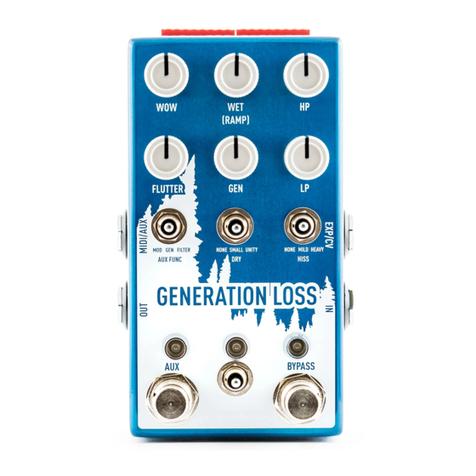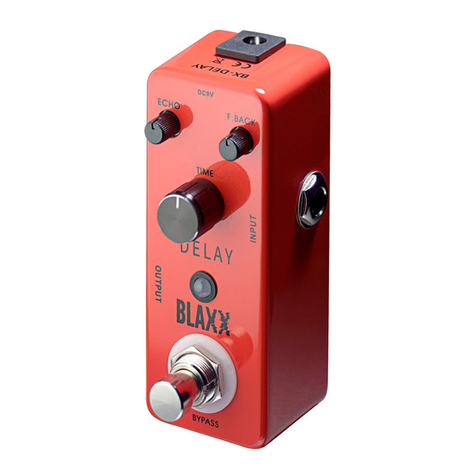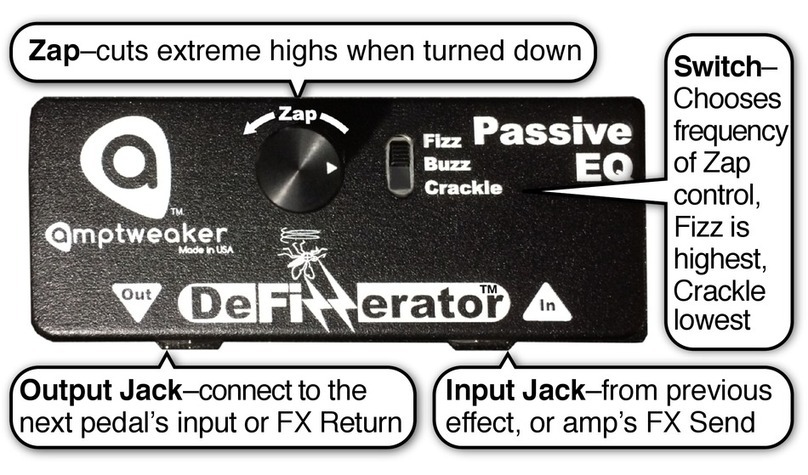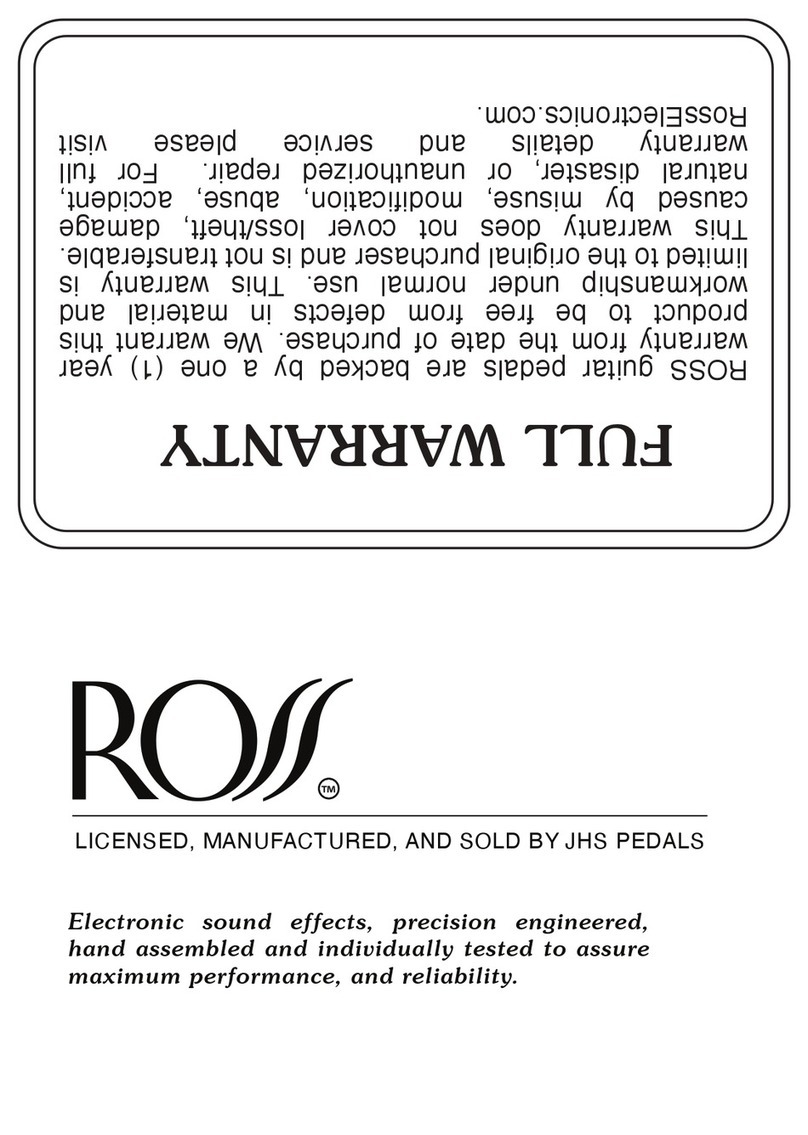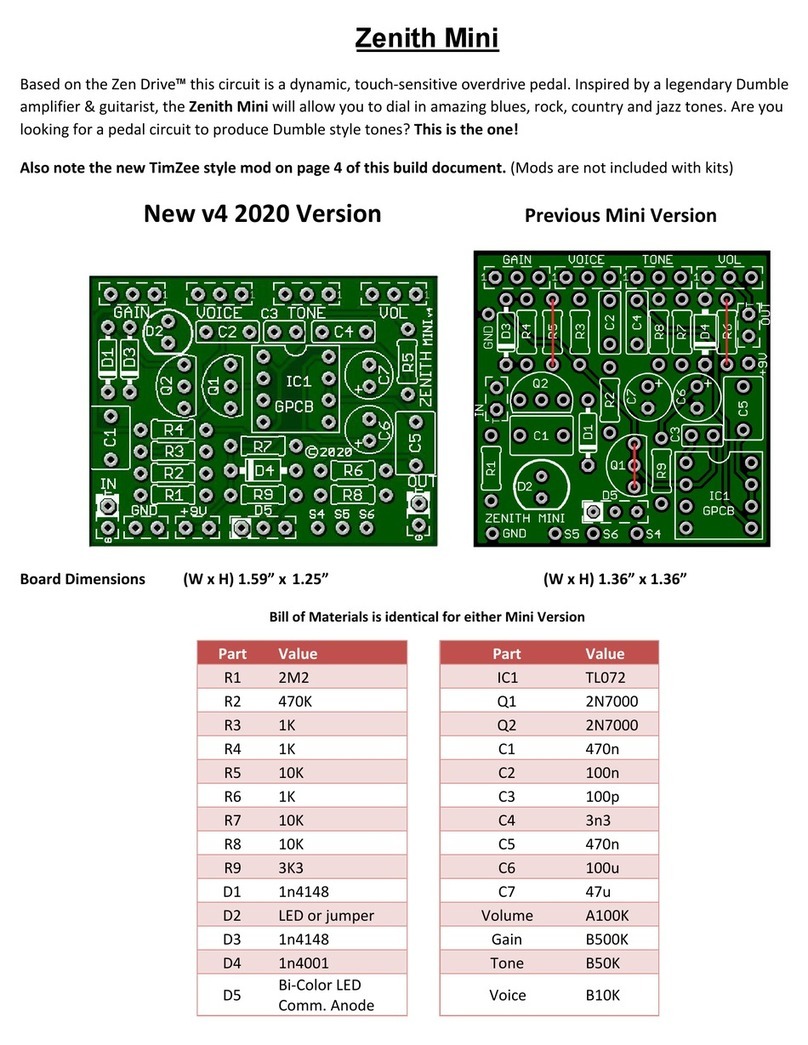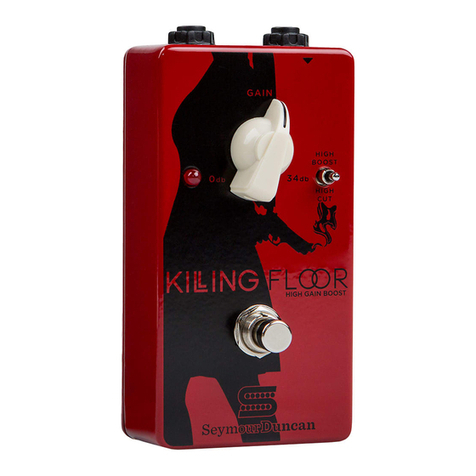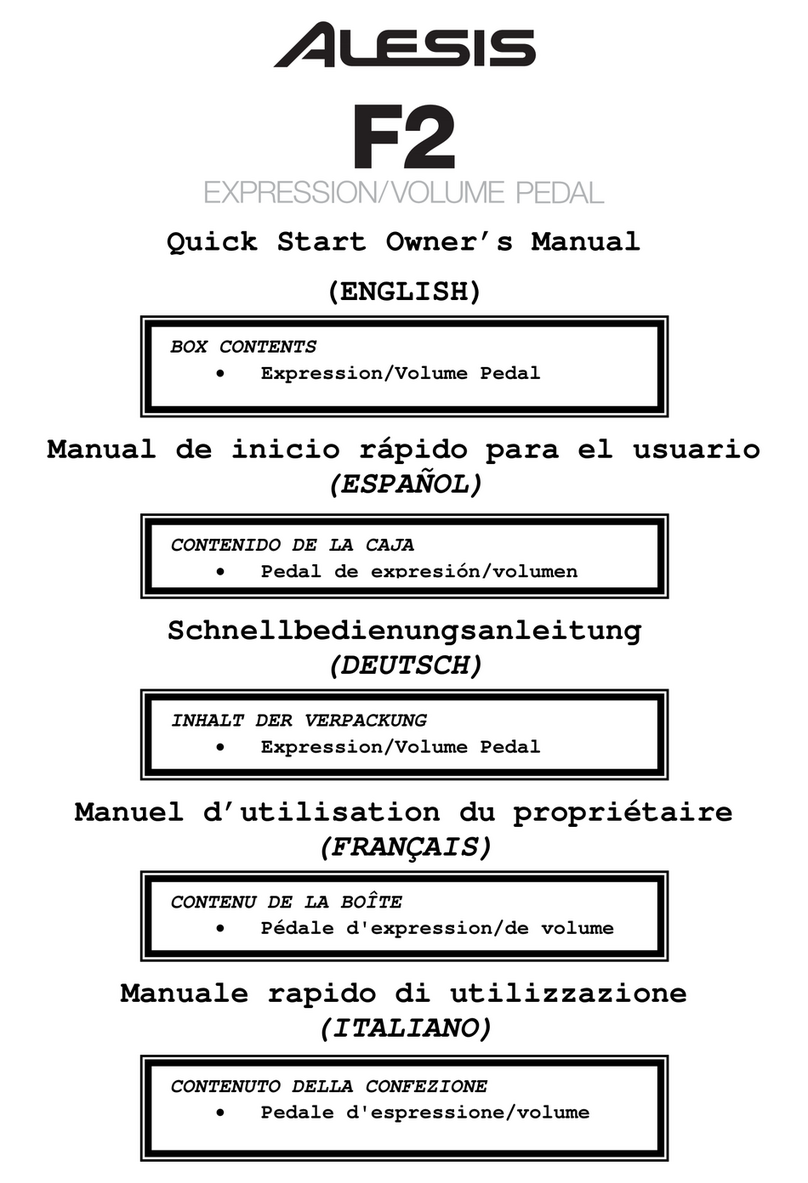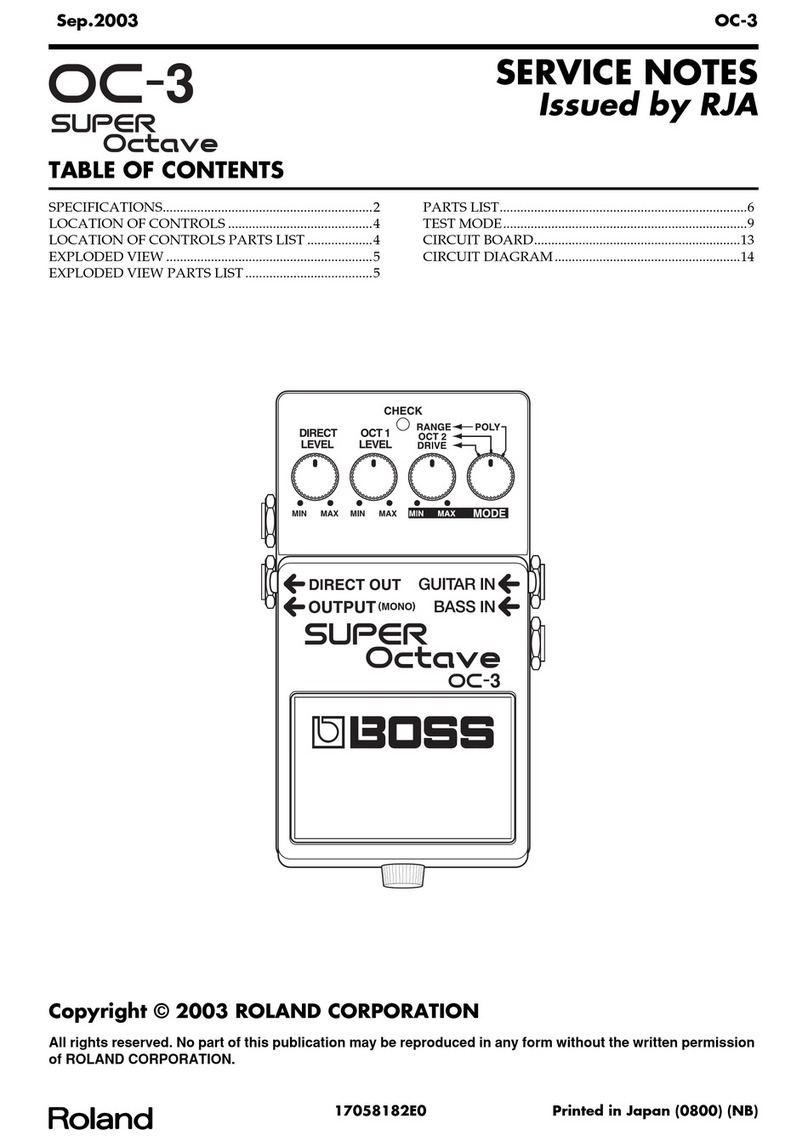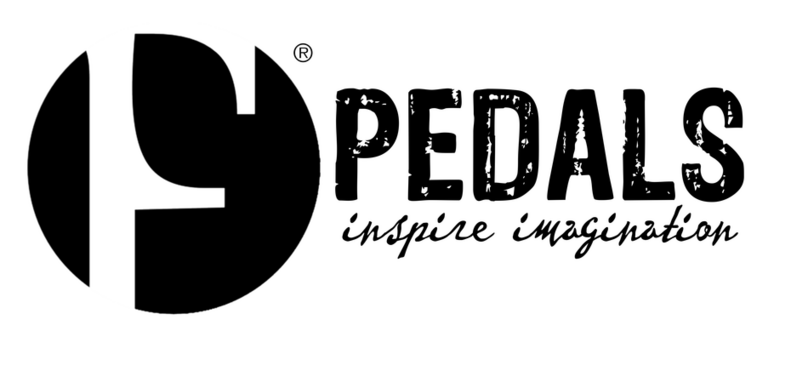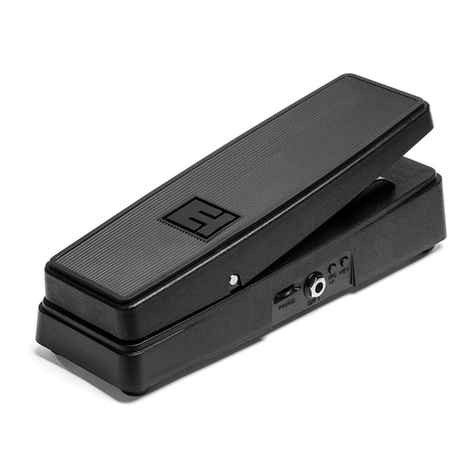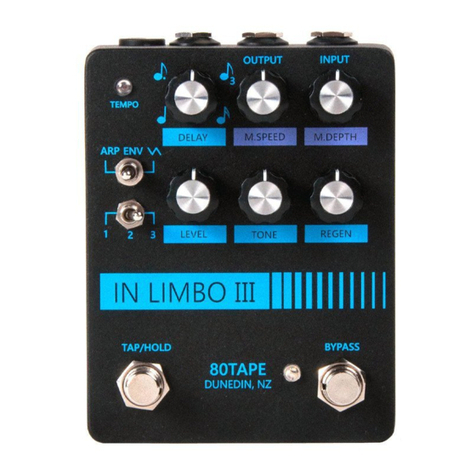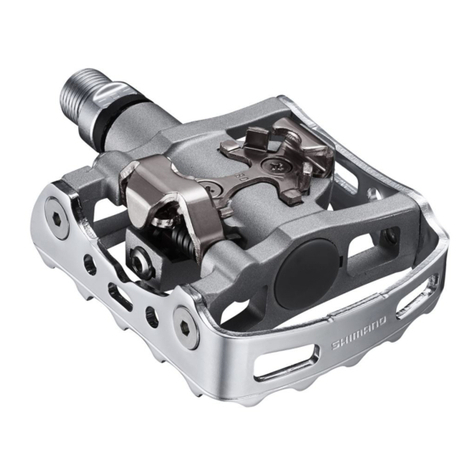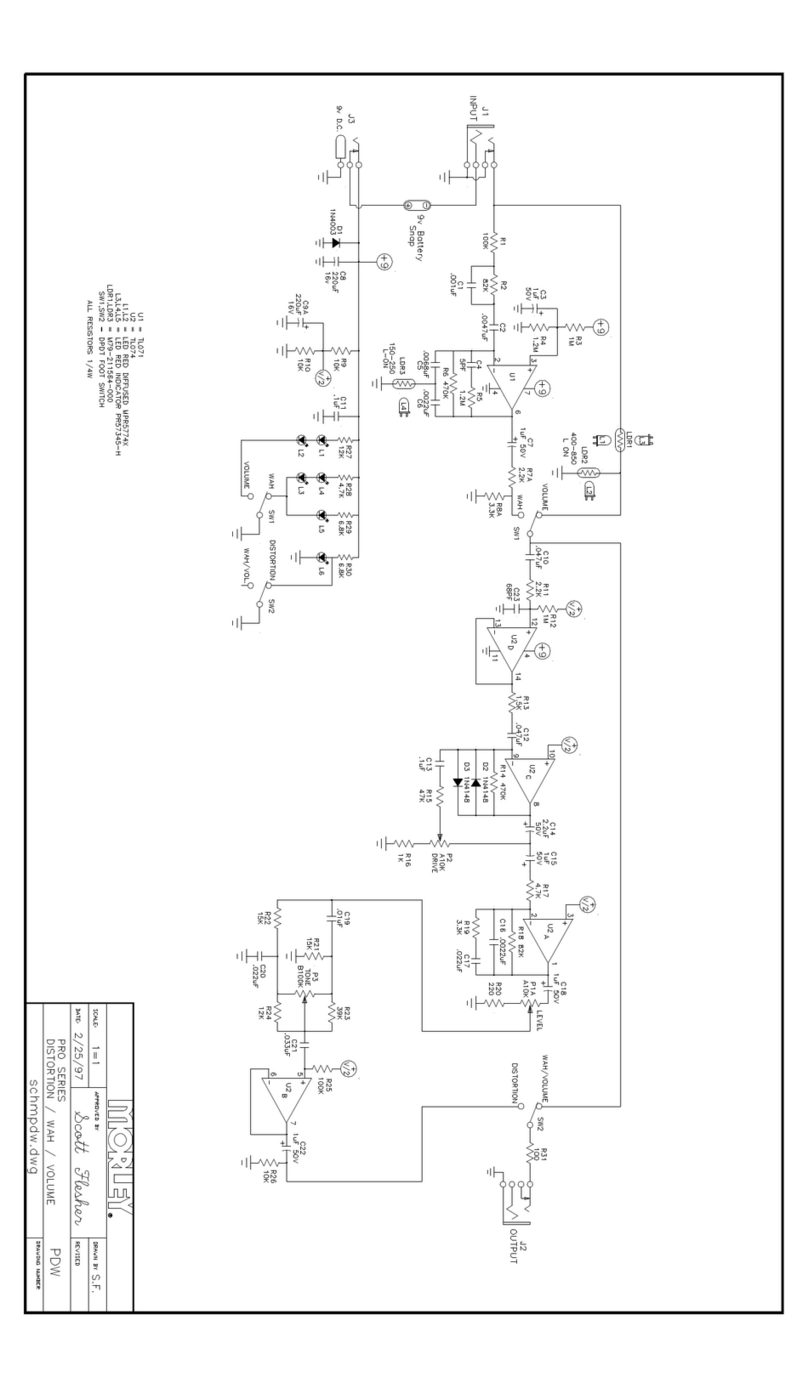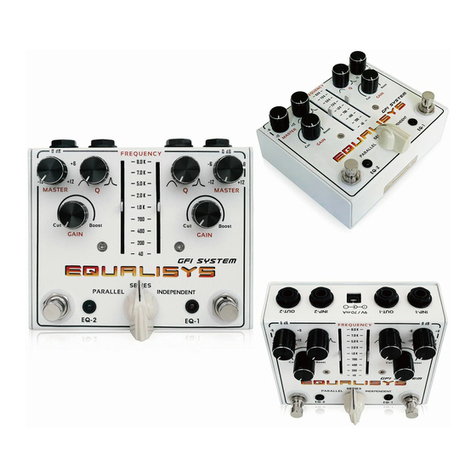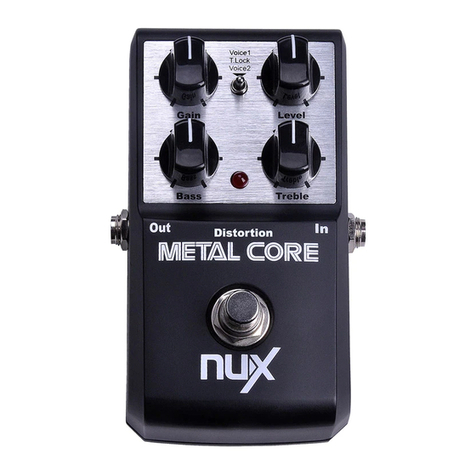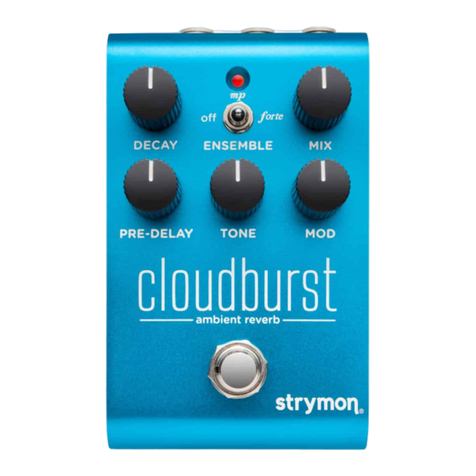Chase Bliss Audio Reverse Mode C User manual

CBA ref 2023- RMC1
A field guide to
Reverse Mode C

Table of Contents
2
4
6
8
16
20
24
28
34
36
38
40
Overview
Setup
Getting Started
Controls
Hidden Options
Balance & Offset
Modulation
Sequencing
Customize
Ramping
External Control
Bye
Power req: 9VDC Center Negative ~270 mA
Reverse Mode C is a tribute to a very special
mode found on the Empress Superdelay,
released in 2008.
Made in collaboration with Empress Effects.

You can isolate, combine, and sequence these
voices to create unique reflections that shift
in all directions and span the stereo field, tied
together by a variety of flexible modulations
that can be synced or drifting.
It’s a unique opportunity to bring the space
around you to life.
Overview
03
02
Reverse Mode C is a very vibrant delay.
It stuffs the ambience around you with color,
creating big, moving backgrounds that contrast
and uplift your playing.
It can also make some pretty cool reverse delay sounds.
How does it do all that?
Reverse Mode C contains three different echo
voices, each one moving in a different direction:
Let’s learn how.
Up or Down Reverse Octave

Setup
If you have a mono input but want to split it to
stereo output: Turn on the MISO dip switch.
And if you want to use Reverse Mode C to create a
wide stereo image: Turn on the SPREAD dip
switch (pg. 34).
OPTIONS
Reverse Mode C has lots of ways to customize
and fine-tune your experience. If you’d like to get
right into all that, check out:
Hidden Options (pg. 16)
Customize (pg. 34)
Ramping (pg. 36)
External Control (pg. 38)
If you don’t want to get into all that, it’s probably
best to start with all dip switches in the off position.
Okay let’s get started.
05
04
Let’s get Reverse Mode C settled into its new
home. If you’re experienced with pedals you can
probably ignore this bit and dive right in.
POWER
Reverse Mode C requires a 9V DC, center negative
power supply, with at least 270 mA of current.
You’ll see this symbol
on your power supply:
I / O
Reverse Mode C can be used in mono, stereo,
or mono to stereo. The default setting will
automatically work for either mono or stereo:
Mono in, mono out Stereo in, stereo out
TS CABLE TSR CABLE
Many stereo devices use dual mono jacks, so
you may need a TRS to dual TS-style cable.

Getting Started
07
06
Let’s begin somewhere familiar.
A nice, clean echo.
The top row of knobs are your essential delay
controls. Spend a moment exploring these to
get comfortable and try some different FILTER
positions while you’re at it.
Now we can get multidirectional.
TIME MIX FEEDBACK
OFFSET BALANCE FILTER
SYNC OFF FREE VIB TREM FREQ RUN OFF ENV
Now let’s introduce some motion.
This is where things come to life.
First, a bit of modulation.
And finally, voice sequencing.
You should sound pretty fantastical by now.
Let’s get into how all this works.
BALANCE
Rotate the BALANCE knob counter-
clockwise and notice how the
echo gradually changes directions
as it morphs from one voice to the
next. Now max it out to hear all
three voices at once.
Twist the OFFSET knob and notice
how the voices split apart, each
taking on a unique delay time and
finding their space in the mix.
OFFSET
RUN OFF ENV
multidirectional.
m u l t i d i r e c t i o n a l .

Sets the global delay time. The maximum
time is 4.19 seconds (or 8.38 when set to
half sample rate, see footswitches
section on pg. 15). You can also use tap
tempo to set the delay time.
TIME
A
Space, blend, repeat.
BMIX (RAMP)
Controls the blend between your input
signal and the effect. If ramping is
engaged (pg. 36), the function of this
knob will change. It now controls the
speed of the movement.
CFEEDBACK
Sets the number of echoes. You can max
out this knob without fear of oscillation –
in some settings you will get stable,
infinite build-up, and in others long,
melting decay.
Controls - Knobs
09
08
A B C
TIME MIX FEEDBACK

You can think of OFFSET as a secondary
time knob. It splits apart the three voices
and gives each one a different delay
time, all linked to the primary TIME knob
(or tap tempo). At minimum all three
voices share the same global delay
setting, but as you turn up the knob they
each begin to gradually change in their
own way. See pg. 22 for the specifics.
OFFSET
D
Split, solo, shape.
EBALANCE
Adjusts the volume of the three voices.
The left half of the knob lets you isolate
and blend between the voices, and the
right half of the knob shifts their relative
levels for different mixes. See pg. 21 for
the specifics.
FFILTER
Controls a dual high-pass / low-pass
filter; rotate clockwise to remove low
frequencies, or counter-clockwise to
remove highs.
Controls - Knobs
11
10
D E F
OFFSET BALANCE FILTER

Controls - Toggles
Modulate, morph, save.
13
12
MOD CONTROL
A
Engages the modulation, and decides
whether it is synced or moving freely.
SYNC - On, rate linked to delay time
OFF - Modulation is bypassed
FREE On, rate independent of delay time
BMOD TYPE
Selects the modulation type.
VIB - Vibrato
TREM - Tremolo
FREQ - Frequency shifting
CSEQUENCE
Engages a sequencer that cycles
between the different voices. It can run
continuously or be manually triggered by
your input signal.
RUN - Synth-style sequencer
OFF - No sequencing
ENV - Envelope-controlled sequencer
DPRESETS
The left and right positions each store a
preset, while the middle position is live
(current settings). To save to the right slot,
hold the right foot switch for 3 seconds, then
add the left footswitch for another 3
seconds. Do the same for the left slot, but
start by holding down the left footswitch. The
middle LED will blink to indicate success.
A B
D
C
MOD
CTRL MOD
TYPE
PRESETS
SEQUENCE

Tap, loop, engage.
BYPASSTAP/LOOP
BA
Tap to engage the pedal.
Hold to cut the sample rate in half. This
will extend the max delay time up to 8.38
seconds and introduce a mild lo-fi quality.
It will also half-speed your existing
echoes when engaged.
Controls - Footswitches
BYPASS / SAMPLE RATE
A
A
Tap to adjust the delay time.
Hold to capture and repeat the current
moment infinitely.
TAP / LOOP
B
B
HOLD
HOLD
15
14
LATCH - The hold commands are momentary
by default, meaning their effect will disappear
when you remove your foot. Engage the LATCH
dip switch (pg. 35) if you would rather have
them stick around.
Holding down both footswitches accesses
secondary controls that fine-tune various
aspects of Reverse Mode C. Keep the
switches held down while making your
changes, and release when you’re finished.
See next page for the options.
HIDDEN OPTIONS
A
B
HOLD

Hidden Options
17
16
Hold down both footswitches until the LEDs turn
green to access the hidden options.
RAMPING WAVEFORM
Selects the shape of the ramping
movement (pg. 36). The shapes
smoothly warp from one to the
next: Triangle, Square, Sine,
Random, Smooth Random.
MIX
MODULATION DEPTH
Sets the intensity of the modulation.
OFFSET
S
U
B
T
L
E
I
N
T
E
N
S
E
SEQUENCER RATE
Selects the speed of the sequencer.
Each option is a different synced
subdivision of the delay time.
TIME
1
6
x
8
x
4
x
2
x
1
1
/
2
1
/
4
1
/
8
S
L
O
W
E
R
MODULATION RATE
Sets the speed of the modulation.
Higher settings will go into audio rate
and become a rough textural element.
BALANCE
F
A
S
T
E
R
DEPTH
REST / SKIPOCT TYPE
DRY KILL
SEQUENCER
RATE
RATE
RAMPING
WAVEFORM
SWAP - If you prefer that the modulation
controls become the primary options, you
can make that change using the SWAP
dip switch (pg.34).
(These settings are the
default for all Hidden Options)

Hidden Options continued
19
18
REST / SKIP
Controls how the sequencer treats
voices that are “muted” by the
BALANCE knob (details on pg. 21).
REST SKIP
RUN OFF ENV
OCTAVE TYPE
Lets you choose whether the reverse
octave voice is an upper or lower
octave. Only one can be used at a
time, but the middle position lets you
use both with the sequencer (pg. 31).
DOWN UP
BOTH
SYNC OFF FREE
RESET
To reset all the hidden options to
their default setting, flip the preset
toggle to the left position and back
to center three times. Once the LEDS
start blinking, press both footswitches
simultaneously to confirm.
X3
DRY KILL - If you’d like to remove the dry signal
from the output (useful for wet/dry set ups), hold
the TAP switch down while powering up the
pedal. Done! This preference will be remembered
in the future.

Balance & Offset Balance
These two knobs control Reverse Mode C’s voices.
BALANCE adjusts the volume of the voices.
OFFSET adjusts the timing of the voices.
The BALANCE knob controls what voice(s) you hear.
The left half of the knob lets you solo a specific
voice, or blend neighboring voices together.
The right half of the knob plays all three voices
at once, and adjusts their relative levels for
different mixes.
21
20
This will be a simple reverse delay.
This will be a blend of both forward
and reverse delay.
VOLUME OF VOICE
BALANCE KNOB POSITION
FORWARD REVERSE OCTAVE
100%
0%
50%

Offset
The OFFSET knob controls the timing of the voices. The knob sweep contains four targets designed
to be pleasing and well-synced.
23
22
At the minimum position
all of the voices share
the same delay time,
equal to the TIME knob
(or tap tempo). They are
essentially stacked on
top of each other.
What OFFSET allows you to do is split those
voices apart, giving each one its own delay
time. This creates space and separation so that
each voice can cut through, and also makes for
more interesting rhythmic relationships.
It smoothly adjusts the values as you travel
between them to let you discover your own and
explore more asynchronous possibilities.
1/64
1/64
x2
1/8
1x
1/3
x1
x1
x1
1/2
3/4
x1

Reverse Mode C contains three different types of
modulation, each with an alternate variety
(accessible via the MOD TYPE dip switch). The
movement can be synced to the delay time or
free, and pushed into audio rate to become a
gritty textural element or create clanging,
discordant echoes.
To get things moving, simply select your
preferred type and whether you want the motion
to be synced to the delay time or free.
To customize that movement we can dip into the
Hidden Options. You can control the depth and
rate by holding down both footswitches and
adjusting the OFFSET and BALANCE knobs.
Try maxing out the RATE control and exploring
the atonal and rough sounds you can get (DEPTH
will also make a big difference here).
SWAP - If you prefer that the modulation controls
become the primary options, you can make that
change using the SWAP dip switch (pg. 34).
Modulation
25
24
SYNC OFF FREE VIB TREM FREQ
There it is.
OFFSET
DEPTH BALANCE
RATE

Modulation Types
27
26
VIBRATO
Classic tape-style pitch modulation.
Gives your echoes a warbly and
vintage quality.
CHORUS
Sparkling, misty pitch modulation.
Lends a dream-like quality to the
ambience.
ALT MODE
TREMOLO (SQUARE)
Abrupt, percussive volume modula-
tion. Chops up your echoes and
establishes a strong sense of rhythm.
TREMOLO (RAMP DOWN)
Plucky, pinging volume modulation.
Produces an electronic quality like a
synth echoing your playing.
ALT MODE
FREQUENCY SHIFTER (UP)
Lush, hypnotic frequency modulation.
The stuff of science fiction.
FREQUENCY SHIFTER (DOWN)
An alternate flavor of frequency
shifting that causes your frequencies
to continuously spiral downwards.
ALT MODE

The sequencer has two modes:
RUN
Synth-style sequencer that continuously steps
forward at a steady speed synced to the delay.
ENV
Envelope-controlled sequencer that only steps
to the next voice when input audio is present.
It can be that simple if you like – just choose your
mode and let the sequencer do its thing. But
we’ve also provided some options to let you dig a
little deeper.
This is where things get special.
The sequencer introduces an extra layer of
motion by stepping through the voices
one-by-one, creating a shape-shifting echo.
Below is the default sequence, which you will notice
includes a bonus 4th voice: reverse octave down.
This makes for a nice, even 4-step sequence.
Sequencing
29
28
FORWARD
ECHO
REVERSE
OCTAVE UP
REVERSE
OCTAVE DOWN
REVERSE
ECHO
INPUT AUDIO INPUT AUDIO INPUT
HOW IT WORKS HOW IT SOUNDS

There are a few ways to adjust the sequencer to
your liking using the Hidden Options.
SEQUENCER SPEED
The sequencer is synced to the delay time, but
you can have it move either at a faster or slower
subdivision. This makes it possible to have long
delay times where the sequencer darts between
different voices, or a slapback delay that slowly
shape-shifts, or everything in-between.
OCTAVES
The OCTAVE TYPE option will also influence the
type of patterns you get from the sequencer.
DOWN - Removes the upper octave from the
sequence, playing the sub octave twice instead.
*BOTH - Both voices appear in the sequence.
UP - Removes the lower octave from the sequence,
playing the upper octave twice instead.
Sequencer Options
31
30
1
6
x
8
x
4
x
2
x
1
1
/
2
1
/
4
1
/
8
SEQUENCER
RATE
REST / SKIPOCT TYPE

REST / SKIP
The sequencer is interactive with the BALANCE
knob. If you set BALANCE in a way that mutes one
or more of the voices, the sequencer will react to
that in one of two ways:
REST - Leaves the muted voices in the sequence,
resulting in a full-length sequence with
moments of silence.
*SKIP - Removes the muted voices from the
sequence, resulting in a shorter sequence.
FADE TYPE
Sets how the sequencer moves from one step to
the next – instantly, or in a *smooth, gradual way.
Sequencer Options
33
32
Now that’s multidirectional!
* Red labels are the default settings.

35
34
The red-labeled dip switches on top of Reverse
Mode C allow you to configure it for your setup
and fine-tune things to your liking.
SWAP
Lets you make DEPTH and RATE surface-level
controls instead of Hidden Options, useful if
you want more immediate control over the
modulation. (When engaged, OFFSET and
BALANCE will become the hidden options.)
MISO
Mono In, Stereo Out. Splits a mono input signal
into a stereo output.
SPREAD
Hard pans the forward and reverse voices to
create a spacious stereo image.
Customize
TRAILS
Allows the echoes to fade out naturally when
the pedal is bypassed, instead of abruptly
disappearing.
LATCH
Changes the hold function for each footswitch
from momentary to latching, so that it will remain
engaged until the footswitch is held again.
FEED TYPE
Sets whether the octave effect is inside or outside
of the feedback loop. This lets you choose
between a steady amount of pitch shifting, or
echoes that *continuously ascend (or descend).
FADE TYPE
Controls how the sequencer moves from one
step to the next – immediately, or in a *smooth,
gradual way.
MOD TYPE
Lets you engage a secondary flavor of modulation
for each type (pg. 26).
* Red labels are the default settings.

Ramping
Now the tone of the echoes will steadily shift,
adding another layer of modulation. The position
of the knob you’re controlling is important,
because it either sets the maximum or minimum
point of the range (depending on the SWEEP
setting).
By default, Bounce is a triangle wave,
but you can use the Hidden Options to choose
from a whole pile of options (pg. 17)
Ramp is the same idea, but the movement only
happens once when you turn the pedal on. Your
chosen knob(s) either rise or fall to the position
set by the knob, then stay there. Useful for
creating a wave of motion and activity when
you first turn Reverse Mode C on.
Check out the Dip Switches 101 document on our
website for a step-by-step on ramping.
Ramping is engaged as soon as the dip switch
for a corresponding knob is set to ON. At this
point, the MIX knob automatically changes to
control the ramp speed. You can still adjust MIX
while ramping by holding down the left
footswitch as you move the knob.
It’s easier to get started with Bounce, so let’s do
that. We’re essentially going to modulate a knob.
Ramping gives you the ability to automate Reverse
Mode C’s knobs, either as a one-time movement
(ramp) or continuous motion (bounce).
2. Choose which knob(s)
you wish to control.
1. Engage Bounce.
3. Choose the sweep. 4. Set the speed.
RAMPFILTER
(
B
)
O
T
T
O
M
(
T
)
O
P
37
36
END
FILTER
START
Table of contents
Other Chase Bliss Audio Music Pedal manuals

Chase Bliss Audio
Chase Bliss Audio Lossy User manual
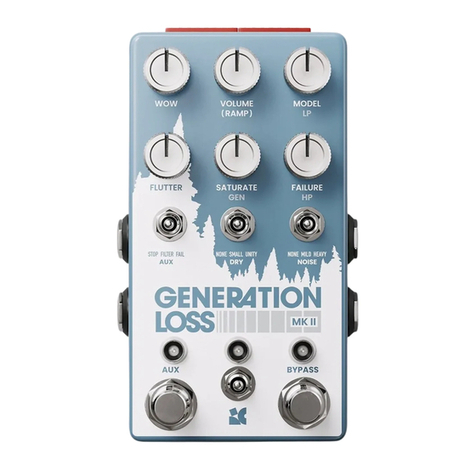
Chase Bliss Audio
Chase Bliss Audio Generation Loss MKII User manual

Chase Bliss Audio
Chase Bliss Audio Mood User manual
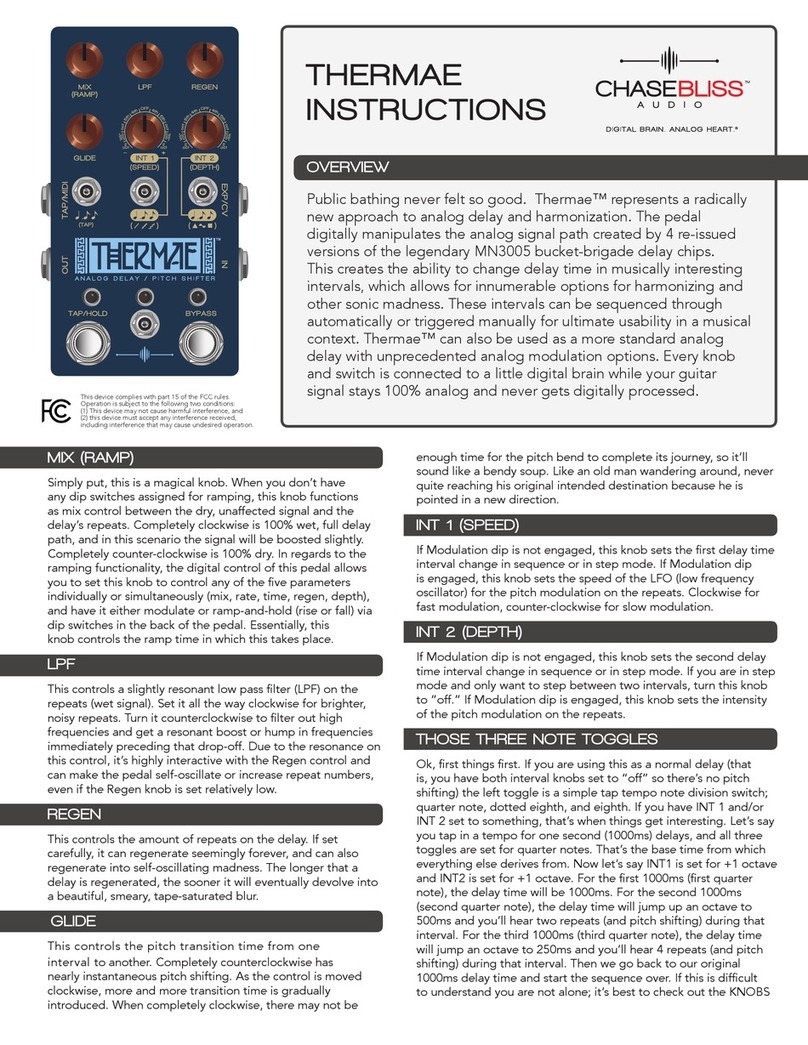
Chase Bliss Audio
Chase Bliss Audio Thermae User manual

Chase Bliss Audio
Chase Bliss Audio MOOD MKII User manual
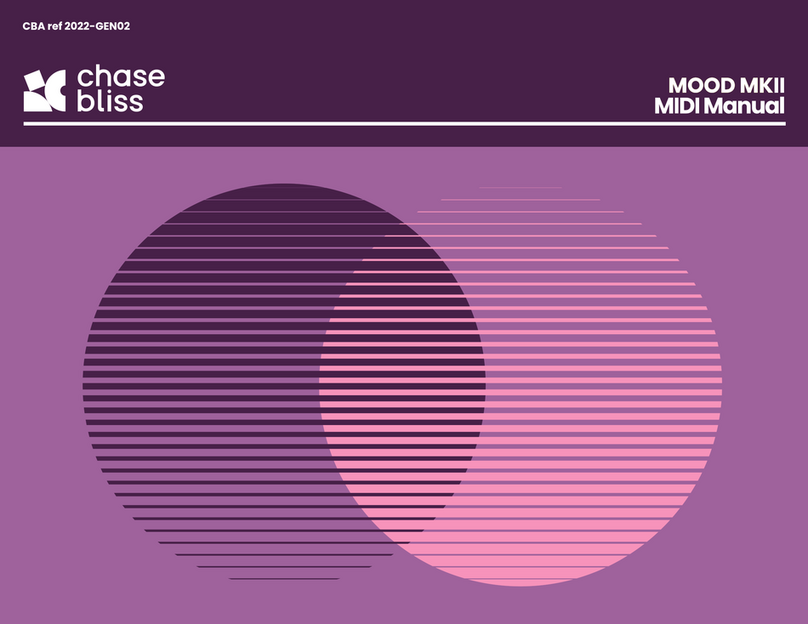
Chase Bliss Audio
Chase Bliss Audio MOOD MKII User manual

Chase Bliss Audio
Chase Bliss Audio Blooper User manual

Chase Bliss Audio
Chase Bliss Audio Brothers User manual
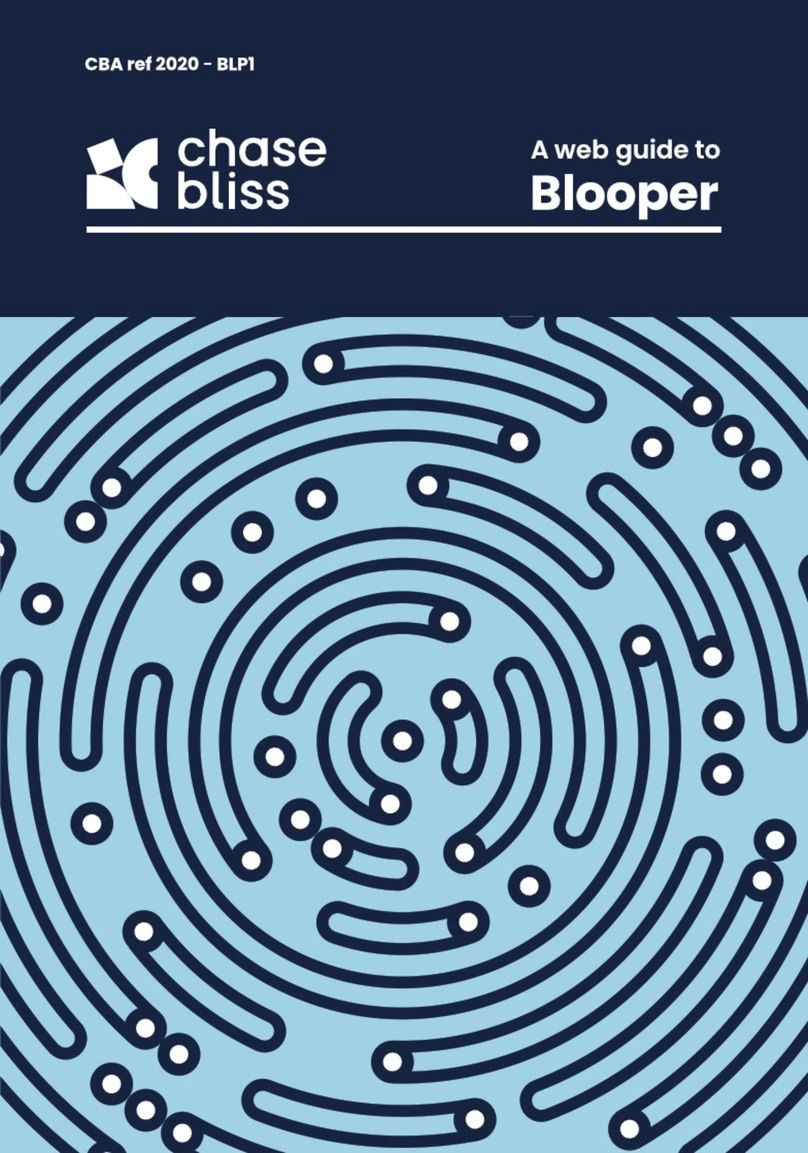
Chase Bliss Audio
Chase Bliss Audio Blooper User manual

Chase Bliss Audio
Chase Bliss Audio Thermae User manual
